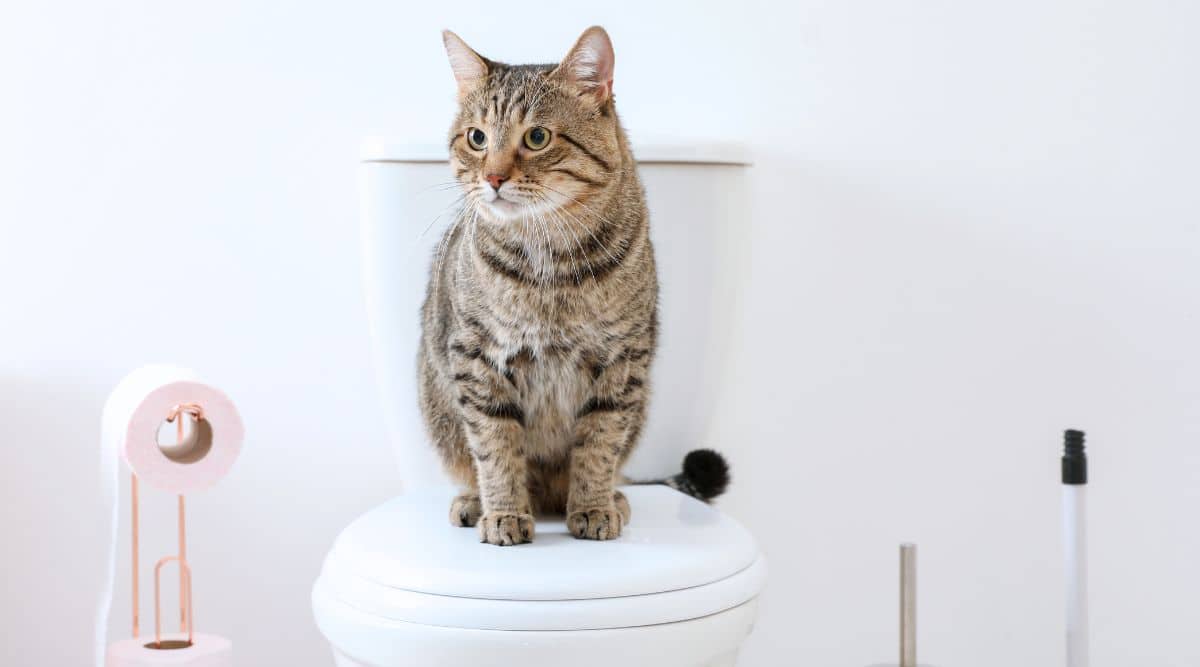Reasons You Mustn't Flush Cat Poop Down Your Toilet - Preserve Your Pipe System
Reasons You Mustn't Flush Cat Poop Down Your Toilet - Preserve Your Pipe System
Blog Article
We have unearthed the article on How to Dispose of Cat Poop and Litter Without Plastic Bags directly below on the internet and accepted it made good sense to talk about it with you on this site.

Intro
As pet cat owners, it's necessary to be mindful of how we get rid of our feline pals' waste. While it may appear hassle-free to purge feline poop down the bathroom, this practice can have damaging repercussions for both the setting and human health and wellness.
Environmental Impact
Flushing feline poop introduces damaging virus and bloodsuckers into the water system, positioning a considerable risk to aquatic communities. These pollutants can adversely impact marine life and compromise water high quality.
Health Risks
In addition to ecological concerns, purging feline waste can likewise present health threats to human beings. Pet cat feces might consist of Toxoplasma gondii, a bloodsucker that can cause toxoplasmosis-- a potentially severe illness, especially for pregnant females and people with damaged immune systems.
Alternatives to Flushing
Fortunately, there are safer and extra accountable methods to deal with cat poop. Take into consideration the following alternatives:
1. Scoop and Dispose in Trash
One of the most usual method of getting rid of feline poop is to scoop it into an eco-friendly bag and toss it in the trash. Be sure to make use of a committed trash inside story and take care of the waste promptly.
2. Usage Biodegradable Litter
Choose biodegradable feline litter made from products such as corn or wheat. These clutters are eco-friendly and can be safely thrown away in the garbage.
3. Bury in the Yard
If you have a backyard, take into consideration hiding cat waste in a marked area far from veggie yards and water sources. Make certain to dig deep sufficient to stop contamination of groundwater.
4. Install a Pet Waste Disposal System
Buy a family pet garbage disposal system especially developed for pet cat waste. These systems utilize enzymes to break down the waste, reducing odor and ecological impact.
Verdict
Liable family pet ownership prolongs past offering food and sanctuary-- it additionally includes correct waste management. By avoiding purging cat poop down the bathroom and choosing alternate disposal approaches, we can minimize our ecological impact and protect human health and wellness.
Why Can’t I Flush Cat Poop?
It Spreads a Parasite
Cats are frequently infected with a parasite called toxoplasma gondii. The parasite causes an infection called toxoplasmosis. It is usually harmless to cats. The parasite only uses cat poop as a host for its eggs. Otherwise, the cat’s immune system usually keeps the infection at low enough levels to maintain its own health. But it does not stop the develop of eggs. These eggs are tiny and surprisingly tough. They may survive for a year before they begin to grow. But that’s the problem.
Our wastewater system is not designed to deal with toxoplasmosis eggs. Instead, most eggs will flush from your toilet into sewers and wastewater management plants. After the sewage is treated for many other harmful things in it, it is typically released into local rivers, lakes, or oceans. Here, the toxoplasmosis eggs can find new hosts, including starfish, crabs, otters, and many other wildlife. For many, this is a significant risk to their health. Toxoplasmosis can also end up infecting water sources that are important for agriculture, which means our deer, pigs, and sheep can get infected too.
Is There Risk to Humans?
There can be a risk to human life from flushing cat poop down the toilet. If you do so, the parasites from your cat’s poop can end up in shellfish, game animals, or livestock. If this meat is then served raw or undercooked, the people who eat it can get sick.
In fact, according to the CDC, 40 million people in the United States are infected with toxoplasma gondii. They get it from exposure to infected seafood, or from some kind of cat poop contamination, like drinking from a stream that is contaminated or touching anything that has come into contact with cat poop. That includes just cleaning a cat litter box.
Most people who get infected with these parasites will not develop any symptoms. However, for pregnant women or for those with compromised immune systems, the parasite can cause severe health problems.
How to Handle Cat Poop
The best way to handle cat poop is actually to clean the box more often. The eggs that the parasite sheds will not become active until one to five days after the cat poops. That means that if you clean daily, you’re much less likely to come into direct contact with infectious eggs.
That said, always dispose of cat poop in the garbage and not down the toilet. Wash your hands before and after you clean the litter box, and bring the bag of poop right outside to your garbage bins.
https://trenchlesssolutionsusa.com/why-cant-i-flush-cat-poop/

I stumbled upon that piece of writing about How to Dispose of Cat Poop and Litter Without Plastic Bags while doing a lookup on the internet. Don't hesitate to set aside a second to promote this page if you enjoyed reading it. Thanks a lot for your time spent reading it.
Visit My Web Page Report this page